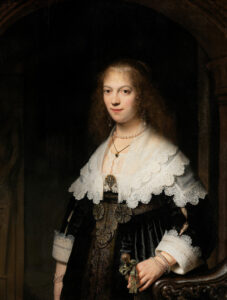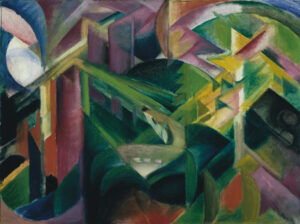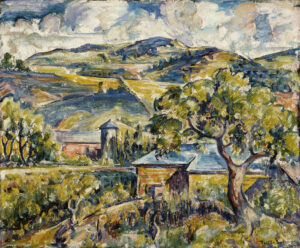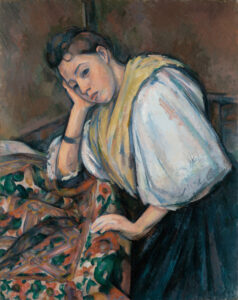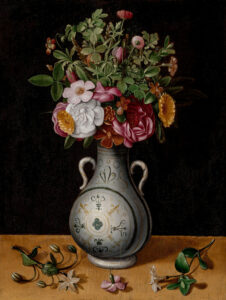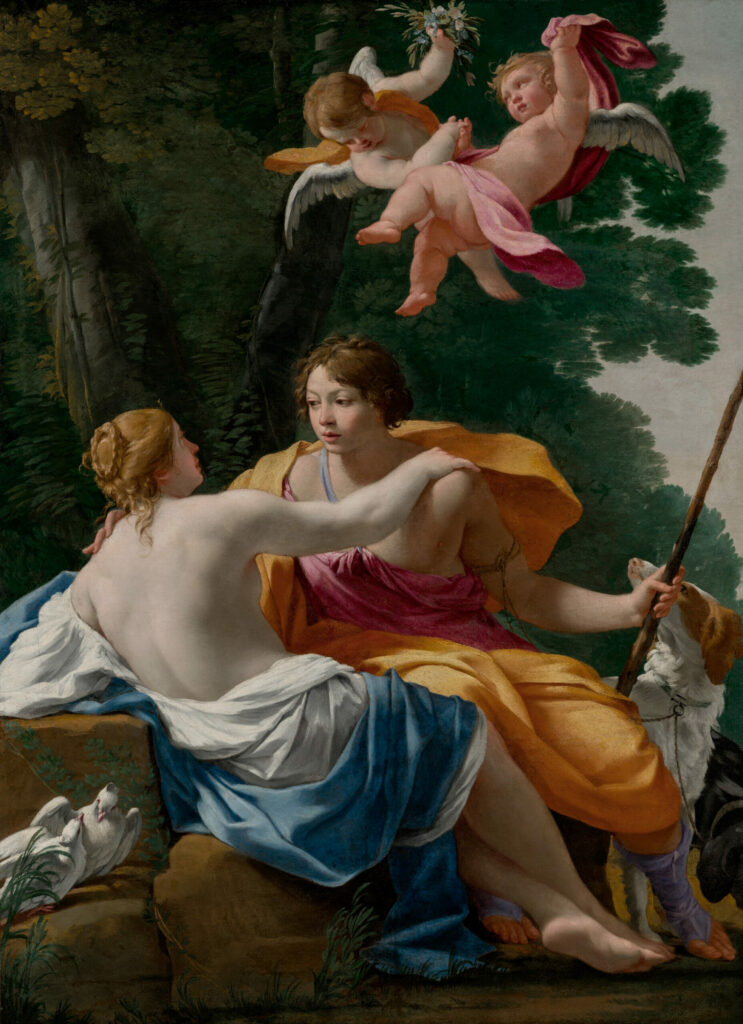
Venus and Adonis (circa 1642) perfectly illustrates the decorative French art of the Grand Siècle, a refined synthesis of mythological tradition and Baroque aesthetics.
Vouet depicts the episode from Ovid in which Venus implores her mortal lover to renounce the hunt that will prove fatal to him. The composition dramatizes this moment of amorous tension: Adonis, impatient to depart, spear in hand, contrasts with Venus who leans toward him in a supplicating gesture. The artist deploys a sumptuous palette—gold, fuchsia, ultramarine blue—characteristic of his decorative style, inherited from his Roman years. The flesh tones contrast the pearlescent skin of the goddess with the golden complexion of the youth with rosy cheeks. Symbols are scattered throughout the scene: faithful doves, putti crowning the lovers, a loyal dog evoking domesticity against the call of the wild. This controlled sensuality, chromatic elegance, and refinement seduced Parisian clientele, eager for a noble art combining classical erudition with Baroque modernity.
Further Information
- Simon Vouet, Venus and Adonis, circa 1642
- Oil on canvas, 132.7 × 96.5 cm (52 1/4 × 38 in.)
- The J. Paul Getty Museum, Los Angeles, 71.PA.19
- https://www.getty.edu/art/collection/object/103RB7
Simon Vouet (1590-1649) dominated French painting in the first half of the 17th century. Trained in Paris, he stayed in Italy from 1613 to 1627, assimilating the lessons of Caravaggio and the Bolognese masters. Appointed First Painter to Louis XIII upon his return, he revolutionized French art by introducing the grand Baroque style tempered by national elegance. His Parisian workshop trained an entire generation of artists, including Le Brun and Mignard. Vouet excelled in religious painting, monumental decoration, and gallant mythology, creating a synthetic style combining Italian monumentality with French refinement. His balanced compositions, shimmering palette, and innate sense of decorative elegance made him the renovator of the French school.

